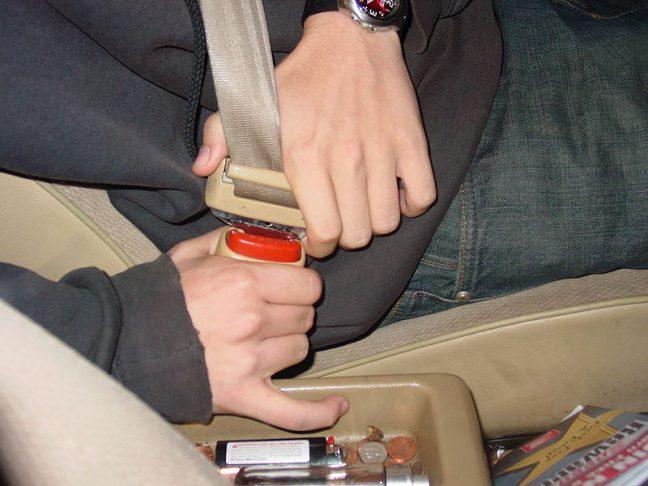Wisconsin drivers appear to be safer than ever.
The state’s seat belt use is at an all-time high, but it still lags behind the national average.
According to a 2016 Wisconsin Department of Transportation field observational survey, 88.4 percent of vehicle users wore their seat belts so far this year.
This rate is slightly below the national average of 89 percent, which means more work needs to be done to reach DOT’s 100 percent seat belt use goal, David Pabst, DOT’s Bureau of Transportation Safety director, said.
“We are excited about [the rate,] but we’re still lagging behind the national average,” Pabst said. “The goal is to have zero deaths, and a cheap and effective strategy is using a seat belt.”
Wisconsin is generally considered one of the safest roadway systems in the country, David Noyce, UW Traffic Operations and Safety Laboratory director, said. The greatest threat to road safety in the state is drinking and driving. Wisconsin ranks in the top 12 states for most alcohol-related road deaths.
Nearly half of drivers and passengers killed in automobile accidents in the past year were not wearing seat belts, Noyce said. In addition, he said alcohol combined with not wearing seat belts increases road risks.
“This statistic alone should be a ‘convincer’ of the benefits of seatbelt use,” Noyce said.
Statistics from the survey show SUV passengers were the most likely to use seat belts while those in commercial trucks were the least likely. Females are also more likely to wear seat belts than males.
The state has implemented several programs to encourage people to buckle up. The “Click It or Ticket” campaign is one program that combines law enforcement and social media outreach to get the message out.
The State Patrol program also encourages seat belt use through instruction and explanation of the safety and cost-reducing benefits, Noyce said. Wisconsin State Patrol also has a convincer, which is a device that people can ride on to simulate the benefits of seat belts in vehicle collisions. They often have the convincer at state and local events, Noyce said.
Noyce said seat belt use can be improved in the long-run through continued distribution of information on the safety benefits and continued enforcement. He said the younger generation of drivers is more likely to wear seat belts than the previous generation and is optimistic of road safety in the future.
“I believe we will continue to see small increases each year in seatbelt use,” Noyce said.


